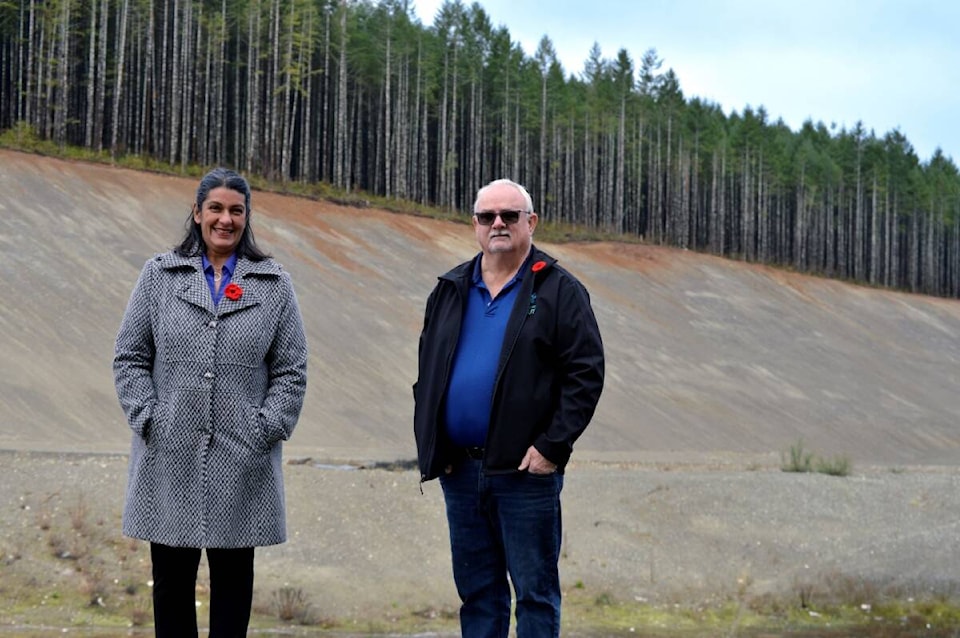Diverting food waste from the landfill in the Comox Strathcona Waste Management area is going to be a bit easier, with construction officially beginning on the Campbell River Regional Organics Compost Project.
The facility will enable curbside collection of organics from over 30,000 homes in Campbell River, Comox, Cumberland and Courtenay.
Capital Projects Manager Cole Makinson said that the facility would be sized to accommodate 14,500 tonnes of material, and will help divert approximately 30 per cent of collected waste from the regional landfill.
“We did a waste composition study a few years ago at the landfill, and it was on Comox Valley Landfill and Campbell River landfill,” Makinson said to the Mirror in April. “Thirty per cent was noted as organics. That can be diverted. Last year, between Campbell River and Comox Valley I think we did just over 62,000 tons land-filled. It’s all kind of rough, but if we diverted every single piece that would be almost 19,000 tons.”
The resulting finished compost will be repurposed for agricultural and landscaping uses.
The facility is scheduled to be complete by next September, and will accept a mix of food and yard waste as part of regular curbside collections. Details from the communities involved will be released as the opening date approaches.
“We are very excited to break ground on this important project,” said Cole Makinson, Capital Projects Manager for Comox Strathcona Waste Management Service. “Removing organics from the waste stream is absolutely essential. Not only do organics take up space in our landfill but methane from the food waste produces greenhouse gases which are harmful to the environment.”
Methane is anywhere from 20 to 80 times as powerful of a greenhouse gas as carbon dioxide, depending on when potency is measured. As food and organics decompose in the anaerobic environment of a landfill, large amounts of methane is produced.
“We’re always compacting and trying to save space. When that degrades anaerobically it produces methane. At our landfill in Comox Valley we extract the landfill gas, which is about 50 per cent methane, and we flare it at our site,” Makinson said. “There’s inefficiencies in the system just because it’s open to air. We get a collection efficiency based on what we run through our facility to what we could be getting produced by our tonnages. It’s about 60 to 70 per cent.
“By removing the organics from the waste stream, and composting them aerobically — we’ve got blowers laid into the floor under the compost pile, so it never goes anaerobic. That methane is not produced.”
While the main facility will be at the Campbell River landfill, a transfer station will be built at the regional landfill in Cumberland. Since the Campbell River landfill is nearly full, household waste from Campbell River will be transported to Cumberland, and organics will travel back up north to Campbell River.
RELATED: Roughly 20% of waste in the landfill is food
Keeping food out of the landfill just might save the planet
marc.kitteringham@campbellrivermirror.com
Like us on Facebook and follow us on Twitter
